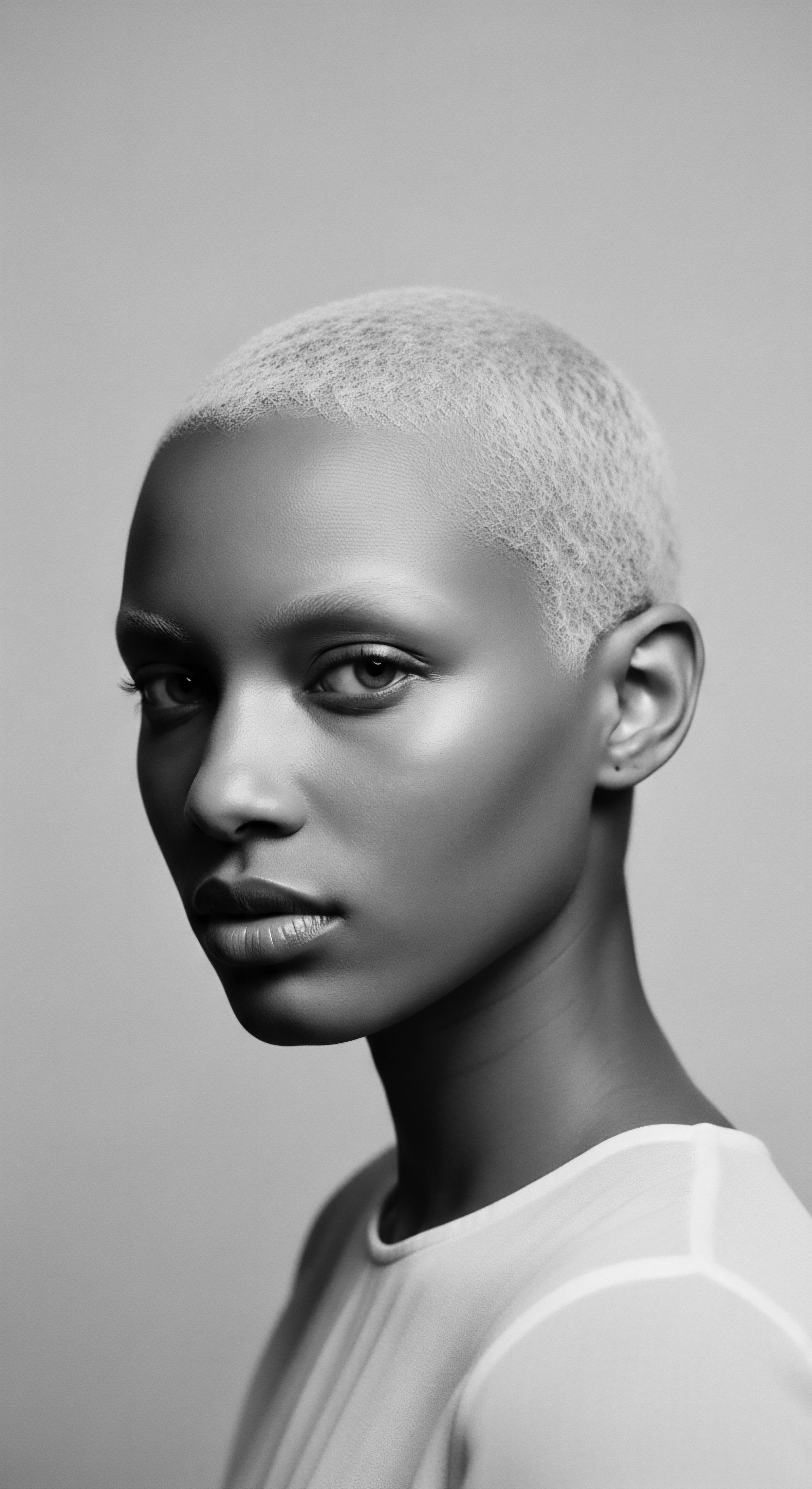
Fundamentals
The concept of Cultural Expression, particularly when viewed through the profound lens of textured hair, is a deeply rooted and multi-layered phenomenon. At its most fundamental, it represents the intrinsic language of the self and the collective, spoken not through uttered words, but through the very fibers of the hair and the intentional practices surrounding its care and adornment. For those with textured hair, especially within Black and mixed-race communities, this expression is far more than superficial styling; it is a living, breathing testament to an unbroken lineage, a continuous dialogue with the past that shapes the present and guides the future.
In its earliest forms, this Cultural Expression was inextricably woven into the fabric of daily life and spiritual understanding across the African continent. Hair was never simply hair; it was a potent symbol, a conduit for spiritual connection, a marker of social standing, age, marital status, tribal affiliation, and even a chronicle of personal journeys. The very act of cleansing, oiling, braiding, or coiling hair was a ritual, a moment of connection not only between individuals but also with the ancestral realm.
Consider the ancient civilizations, from the Egyptians to the various kingdoms of West and Southern Africa, where hair was meticulously tended. The styles were intricate, often requiring hours, sometimes days, to complete, signifying their profound Significance. This communal effort fostered bonds, passing down not just techniques, but stories, wisdom, and the very heritage of a people. Hair was a form of identification, a visual narrative that immediately conveyed one’s place within the societal structure and spiritual cosmos.
Cultural Expression, through textured hair, serves as a primordial language of identity, lineage, and collective memory, connecting individuals to their ancestral roots.
The Elucidation of hair as an early form of communication reveals how early communities understood the human body as a canvas for meaning. The meticulous care, the specific partings, the incorporation of cowrie shells, beads, or precious metals—all served as elements of a complex semiotic system. These were not random choices; each strand, each braid, each adornment carried a specific Connotation, a silent yet powerful declaration of who one was and where one belonged.

The Earliest Whispers of Identity
Before the echoes of distant lands reached their shores, African societies utilized hair as a profound medium for personal and communal Statement. Hair patterns could denote a person’s readiness for marriage, their mourning period, their status as a warrior, or their spiritual leadership. This deep-seated connection meant that hair care was often intertwined with rites of passage and ceremonies, becoming a sacred practice passed down through generations.
The very texture of the hair, with its diverse curl patterns and coil formations, lent itself to an astonishing array of styles that were both functional and symbolic. From tightly coiled bantu knots to elaborate cornrows, each style was a deliberate act of Delineation, often carrying practical benefits such as protecting the scalp from the sun or keeping hair tidy during labor, while simultaneously broadcasting cultural messages.
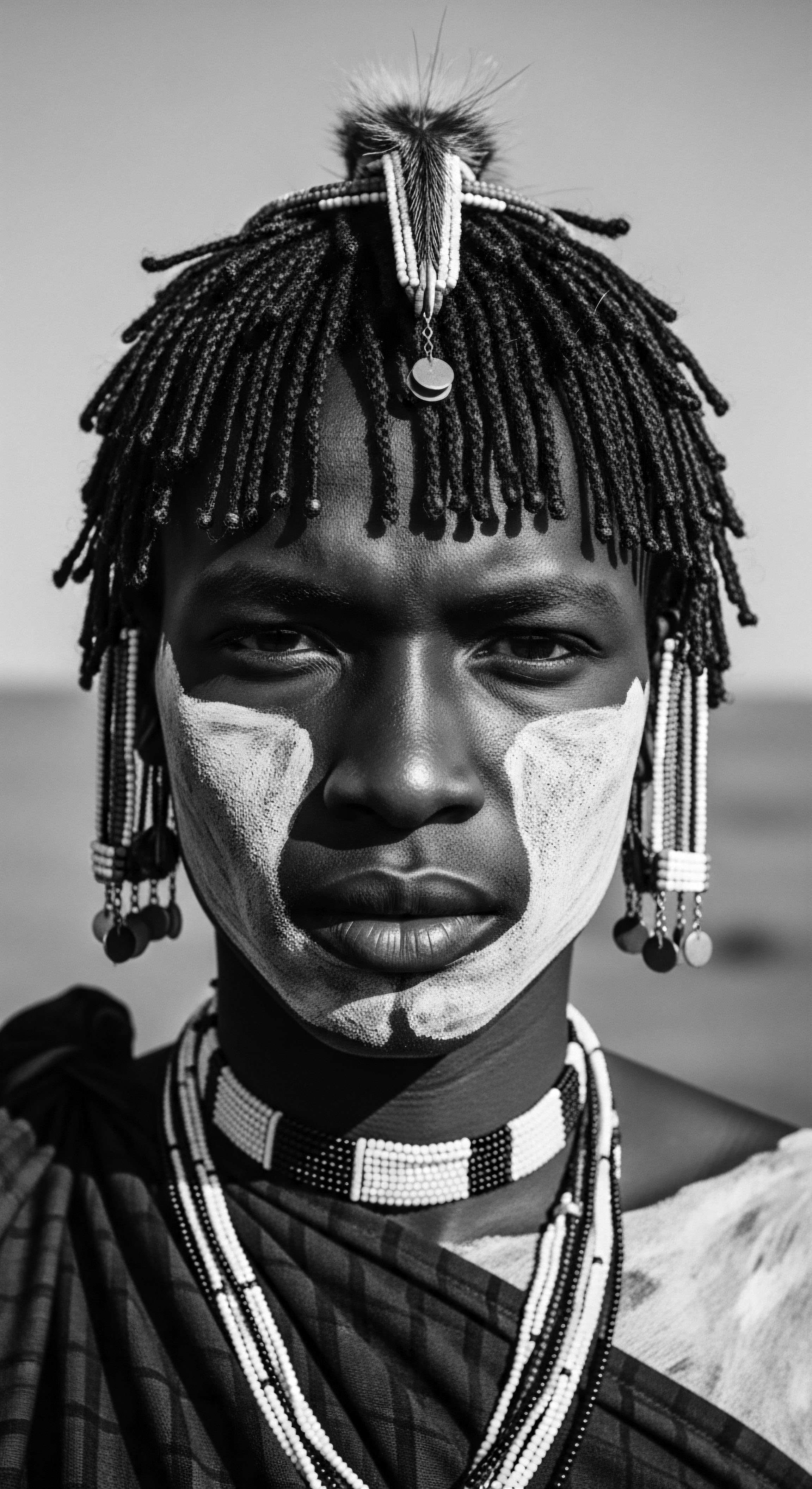
Hair as a Sacred Chronicle
In many ancestral traditions, hair was seen as an extension of the soul, a spiritual antenna connecting the individual to the divine. The top of the head, where hair grows, was often considered the gateway for spiritual blessings and guidance. This spiritual Interpretation imbued hair care with a reverence that transcended mere hygiene or aesthetics. Traditional healers and spiritual leaders often wore specific hairstyles that reflected their connection to higher powers, serving as living symbols of their spiritual authority.
The act of cutting hair was rarely undertaken lightly; it often signified a significant life event, a break from the past, or a new beginning. The preservation of hair, sometimes in sacred bundles, underscored its enduring Significance as a part of one’s personal and ancestral narrative.

Communal Rites of Adornment
The communal aspect of hair care cannot be overstated. It was, and in many communities remains, a powerful act of bonding. Children learned techniques and stories at the knees of their elders. Women gathered, sharing not only styling methods but also life lessons, dreams, and sorrows.
This collective ritual reinforced social cohesion and transmitted cultural heritage across generations. The very act of one person tending to another’s hair became a tender thread, weaving individuals into the larger fabric of the community.
The traditional tools and ingredients used in these practices were sourced from the natural environment, reflecting an intimate knowledge of local flora and its properties. These ancestral formulations, often passed down orally, formed the bedrock of hair health and beauty, embodying a holistic approach to wellbeing.
- Shea Butter ❉ Revered for its deeply moisturizing and protective properties, often used to seal moisture into hair strands and soothe the scalp.
- Kalahari Melon Oil ❉ Known for its lightweight hydration and nourishing qualities, frequently applied to add luster and softness.
- Aloe Vera ❉ Utilized for its soothing and healing attributes, particularly beneficial for scalp health and promoting hair vitality.
- Chebe Powder ❉ A Chadian tradition, historically used to strengthen hair, reduce breakage, and promote length retention through a protective hair mask ritual.
- Hibiscus ❉ Often incorporated into rinses or pastes to condition hair, enhance shine, and support hair growth.

Intermediate
As societies evolved and interactions across continents shifted, the Meaning of Cultural Expression through textured hair underwent profound transformations, yet its core function as a vessel of heritage remained steadfast. This intermediate stage of understanding delves into how ancestral practices, once confined to specific geographies, were carried across oceans and adapted under new, often oppressive, circumstances. The continuity of these practices, even in the face of immense adversity, speaks volumes about their inherent power and the resilience of the human spirit.
The forced migration of Africans during the transatlantic slave trade presented an unparalleled challenge to the preservation of cultural identity. Stripped of their languages, names, and traditional adornments, hair became one of the few remaining canvases for self-Elucidation and resistance. In the clandestine moments of shared hair care, ancestral memories were whispered, techniques were safeguarded, and a profound sense of community was secretly reinforced.
This period saw the ingenious adaptation of traditional styles for survival and covert communication. Braids became maps, intricate patterns hiding pathways to freedom. Seeds of native crops, crucial for survival and the establishment of new life, were often braided into hair, carried across the Middle Passage to be replanted in foreign soils. This practical application of hair as a tool for survival elevated its Significance beyond mere aesthetics, transforming it into a powerful instrument of hope and continuity.
Through diasporic journeys, hair became a profound medium of resistance, resilience, and covert communication, adapting ancestral wisdom for survival.
The evolution of textured hair care practices during this era also involved resourcefulness. Lacking traditional ingredients, enslaved people improvised, using whatever was available to maintain hair health, such as animal fats, kitchen oils, and natural clays. These adaptations, while born of necessity, underscore the enduring commitment to hair care as an act of self-preservation and cultural fidelity. The Clarification of these practices reveals a deep ancestral wisdom that found ways to persist and adapt.
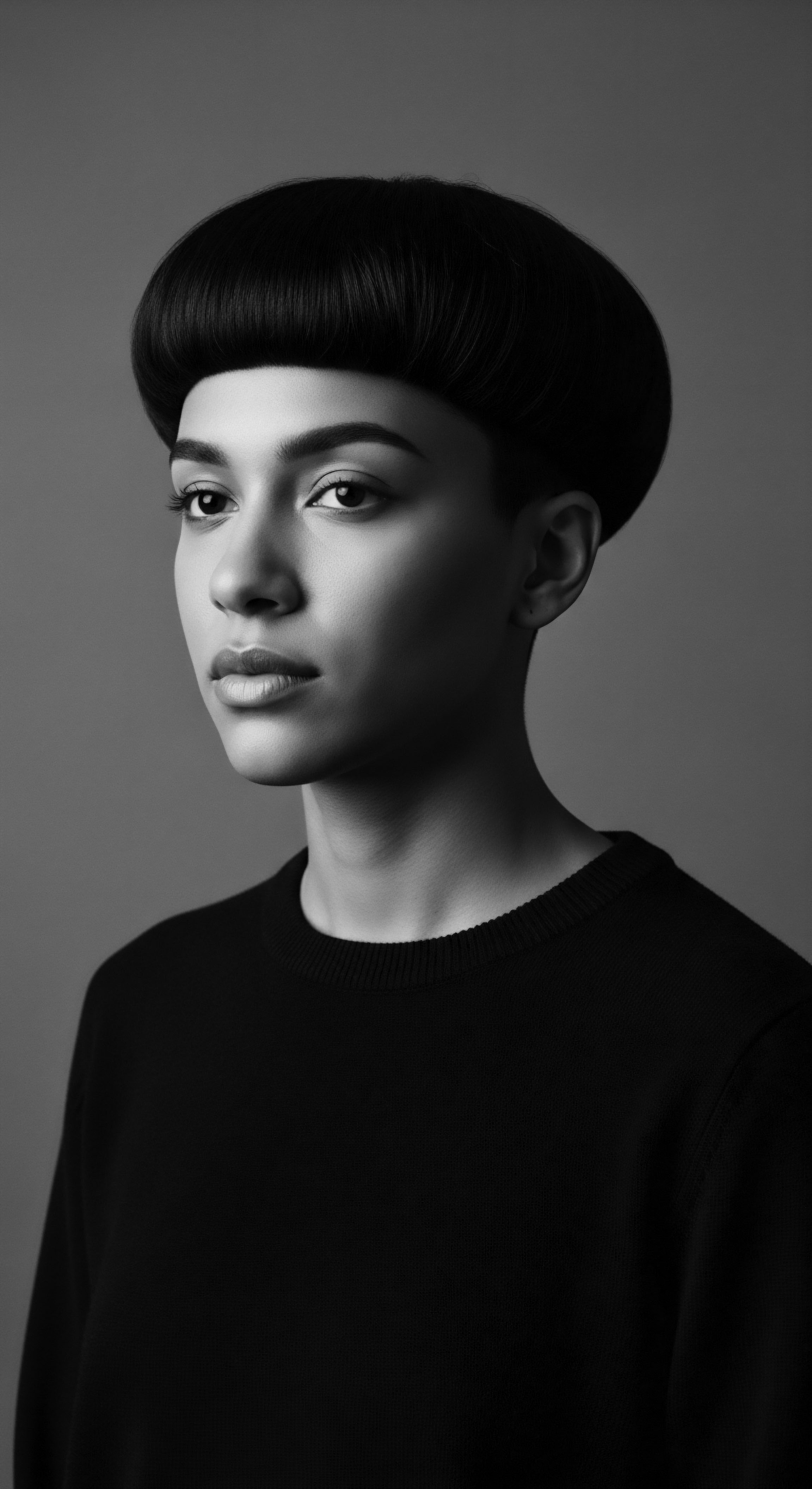
Diasporic Echoes ❉ Hair as a Lingua Franca
Across the Americas and the Caribbean, diverse African ethnic groups, once separated by vast distances, found common ground in the shared experience of their hair. The intricate braiding patterns and styling techniques that survived the Middle Passage became a silent lingua franca, a way to recognize kin, to share stories, and to preserve a collective identity. This shared hair language transcended linguistic barriers, forging new communities from fragmented ancestries.
The rise of specific styles like cornrows, box braids, and later, locs, within the diaspora, represents a powerful act of reclaiming and reinterpreting ancestral aesthetics. These styles, often requiring skill and patience, served as a direct link to the traditions left behind, a visual defiance against attempts to erase cultural memory. They became symbols of resilience, self-determination, and a vibrant connection to a rich heritage.

The Resilience of the Strand ❉ Adapting Ancestral Wisdom
Despite systematic attempts to suppress African cultural practices, the traditions of hair care persisted, adapting to new environments and challenges. The wisdom of protective styling, passed down through generations, proved vital for maintaining hair health in often harsh conditions. This continuity was not merely about survival; it was about thriving, about finding ways to express beauty and identity even in the darkest of times.
The ingenuity in adapting available resources for hair care speaks to a deep ancestral understanding of natural properties. The use of everyday kitchen ingredients or locally sourced plants for conditioning, cleansing, and styling hair highlights a resourceful and sustainable approach to beauty that echoes ancient practices. This practical Explication of resourcefulness provides insight into the enduring nature of traditional knowledge.
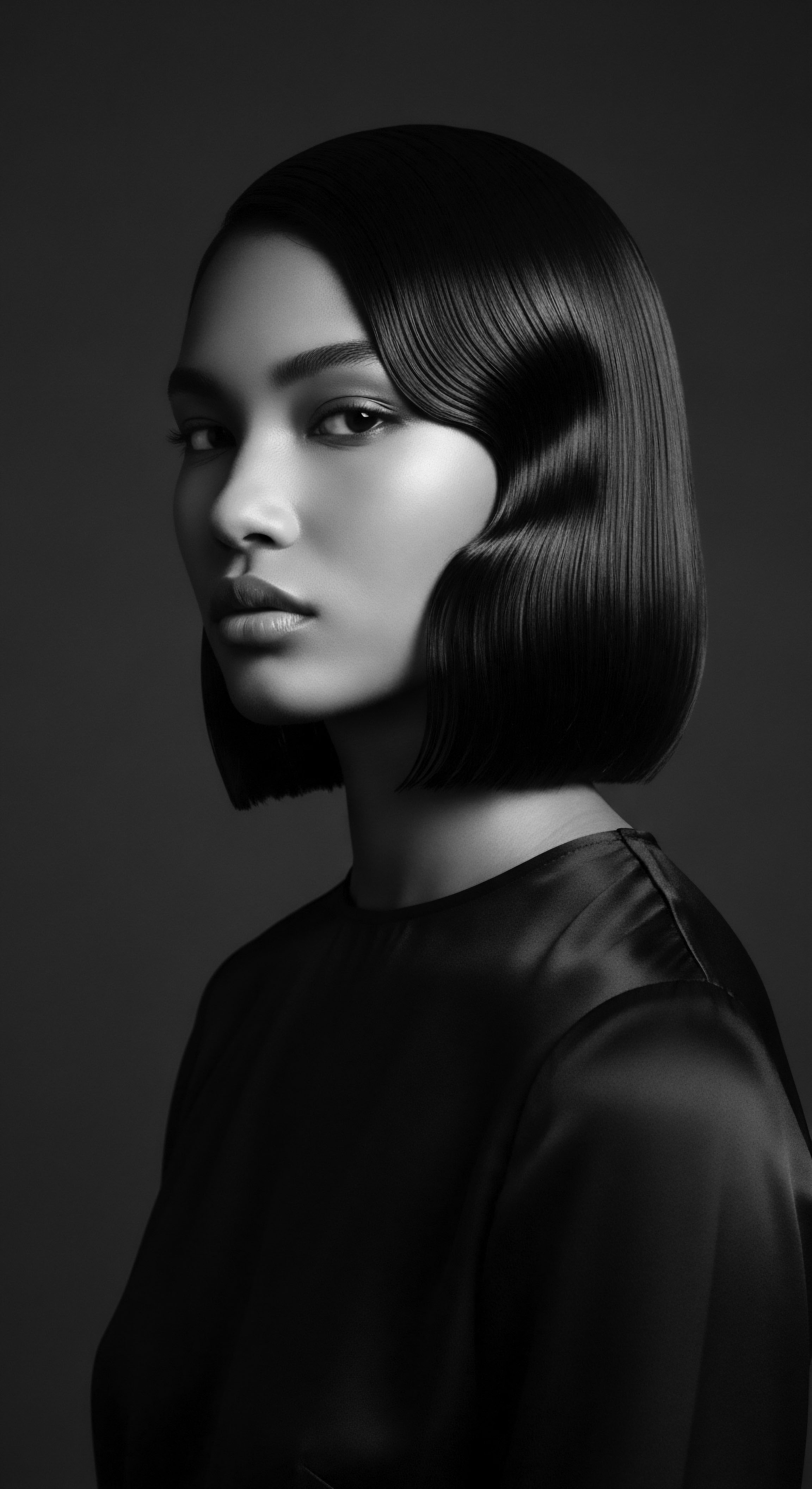
Rituals of Remembrance and Rebirth
Even in contexts where outward expressions of African culture were forbidden, hair care remained a private, intimate ritual of remembrance. Mothers braided their daughters’ hair, imbuing each stroke with stories of home, resilience, and hope. These moments, often hidden from the gaze of oppressors, became sacred spaces for cultural transmission and the reaffirmation of self-worth.
In the wake of emancipation and subsequent civil rights movements, textured hair became an overt symbol of pride and protest. The Natural Hair Movement, in its various iterations throughout history, has consistently sought to reclaim and celebrate the innate beauty and versatility of textured hair, rejecting imposed beauty standards and affirming an ancestral aesthetic. This ongoing rebirth of hair traditions underscores the dynamic nature of Cultural Expression, continually evolving yet always rooted in heritage.
| Ancestral Practice (Pre-Diaspora) Intricate braiding patterns for tribal identity and status. |
| Diasporic Adaptation/Continuity Cornrows and box braids as symbols of cultural pride and resistance. |
| Ancestral Practice (Pre-Diaspora) Use of natural oils and butters (e.g. shea, palm oil) for moisture and protection. |
| Diasporic Adaptation/Continuity Adaptation to available oils (e.g. coconut, castor) and homemade remedies for hair health. |
| Ancestral Practice (Pre-Diaspora) Hair as a spiritual antenna, adorned with sacred items. |
| Diasporic Adaptation/Continuity Locs as a spiritual and cultural statement, connecting to African roots and Rastafarian traditions. |
| Ancestral Practice (Pre-Diaspora) Communal hair grooming as a social bonding ritual. |
| Diasporic Adaptation/Continuity Hair salons and home gatherings as spaces for community building and cultural exchange. |
| Ancestral Practice (Pre-Diaspora) The enduring legacy of hair care traditions showcases remarkable adaptability and an unbroken connection to ancestral wisdom. |

Academic
The most advanced Definition of Cultural Expression, particularly within the scholarly discourse surrounding textured hair, positions it as a profound, multifaceted phenomenon encompassing biological predisposition, historical trauma, sociological resistance, and psychological affirmation. It is the intricate interplay where the inherent structural properties of Afro-textured hair become a dynamic canvas for deeply embedded cultural codes, socio-political statements, and an enduring legacy of ancestral knowledge. This academic lens allows for a granular Explication of how the unique helical geometry of textured hair, far from being merely aesthetic, facilitates an unparalleled range of protective styles and communal practices that have served as vital conduits for identity preservation and resistance across generations.
From an anthropological standpoint, the Designation of hair as a primary site of Cultural Expression in African and diasporic communities speaks to its semiotic density. Unlike other bodily adornments, hair is living, growing tissue, capable of continuous transformation, thereby offering a dynamic medium for non-verbal communication. Scholars examine how specific styling practices, such as the meticulous braiding or twisting techniques, are not simply aesthetic choices but codified systems transmitting information about lineage, social status, and even spiritual beliefs. The very act of hair manipulation becomes a performance of cultural continuity, a ritualized reaffirmation of heritage against forces of erasure.
Sociologically, the politics of textured hair, and thus its Cultural Expression, have been deeply intertwined with power dynamics and racial hierarchies. During periods of colonialism and slavery, attempts were made to devalue and suppress traditional African hairstyles, forcing assimilation into Eurocentric beauty standards. This historical pressure transformed the simple act of wearing one’s hair naturally, or in traditional styles, into an act of overt resistance and political protest. The Significance of the Natural Hair Movement, for instance, cannot be overstated as a decolonial project, asserting the beauty and validity of ancestral aesthetics against centuries of imposed inferiority.
Academically, Cultural Expression in textured hair represents a complex interplay of biology, history, and social dynamics, serving as a powerful medium for identity and resistance.
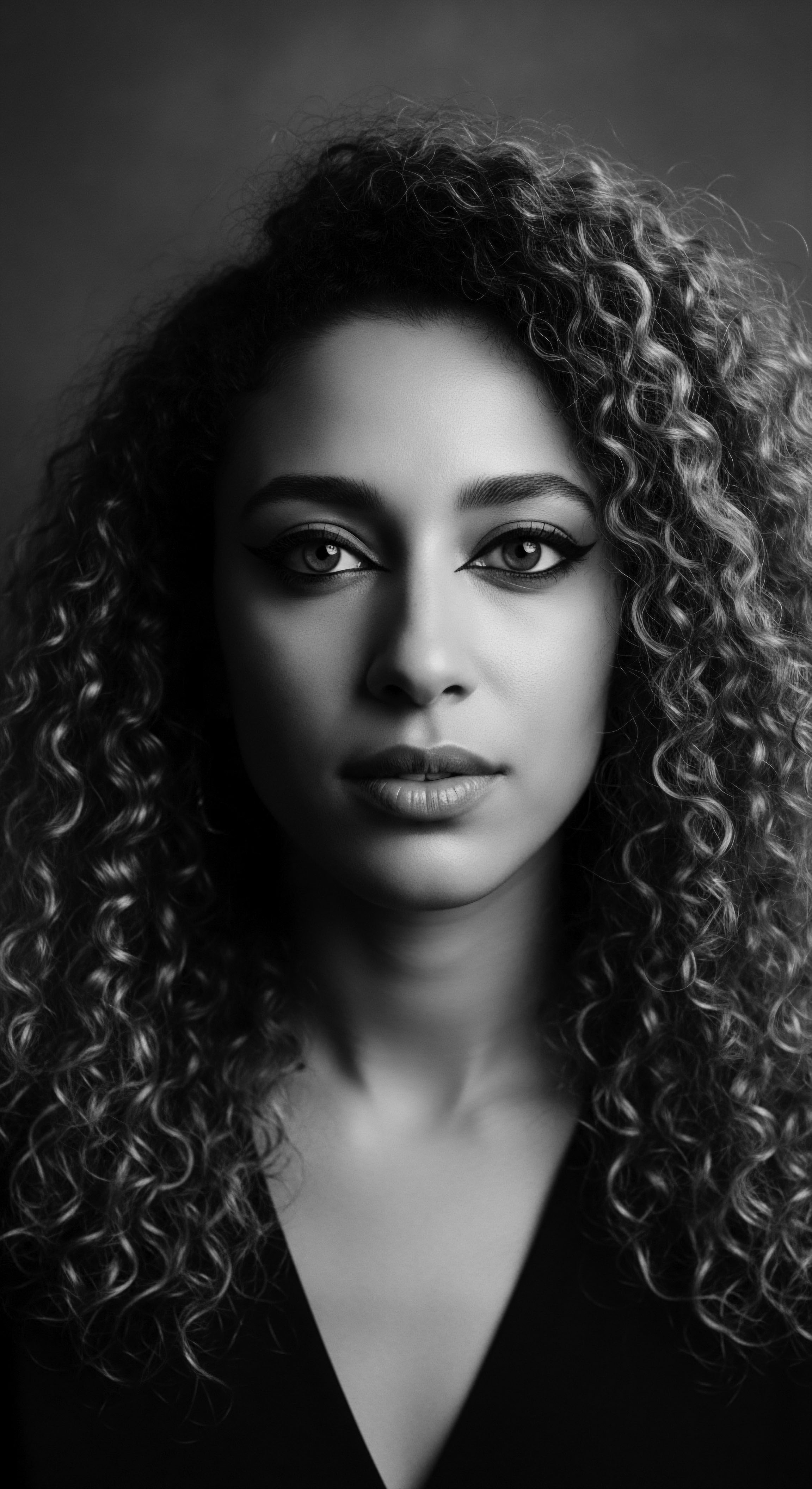
The Biophysical Canvas of Cultural Expression
The biological distinctiveness of textured hair, characterized by its elliptical cross-section, higher curl density, and unique cuticle structure, is not merely a scientific curiosity; it is the foundational substrate upon which a vast spectrum of Cultural Expression is built. These biophysical attributes allow for an extraordinary versatility in styling, enabling the creation of intricate patterns that would be challenging or impossible with other hair types. This inherent capability of textured hair has, throughout history, been ingeniously leveraged by communities to create hairstyles that are both protective and profoundly symbolic.
For example, the ability of highly coiled hair to hold braids and twists without unraveling easily facilitated practices like the concealed transport of rice seeds during the transatlantic slave trade. This powerful historical instance underscores the dual function of textured hair ❉ as a natural fiber capable of holding form, and as a silent, yet potent, vessel of survival and ancestral legacy. The seeds, often of rice, millet, or okra, were meticulously braided into the hair of enslaved Africans, serving as a vital means of preserving agricultural heritage and ensuring sustenance upon arrival in new, unknown lands. This practice, documented by scholars like Judith Carney and Richard Rosomoff in their work on African agricultural transfers to the Americas, demonstrates a sophisticated, covert form of Cultural Expression and resistance, where hair literally carried the future of a people.
(Carney & Rosomoff, 2009). The intricate patterns, while seemingly decorative, often served as practical, clandestine carriers of invaluable resources.

Hair as a Socio-Political Statement ❉ A Decolonial Lens
From a decolonial perspective, the Cultural Expression of textured hair challenges and subverts the historical dominance of Eurocentric beauty ideals. The rejection of chemical relaxers and the embrace of natural textures represent a conscious disengagement from colonial aesthetics and a powerful re-centering of African and diasporic beauty standards. This act of reclaiming one’s natural hair is not just personal; it is a collective political statement, a reclamation of autonomy and a celebration of ancestral identity.
The academic Interpretation of this movement considers how natural hair becomes a site of political agency, a visual manifesto for self-acceptance and cultural pride. It questions the historical narratives that pathologized textured hair, re-framing its unique qualities as strengths rather than deficiencies. This intellectual inquiry delves into the psychological impact of such movements, exploring how they contribute to improved self-esteem, cultural literacy, and community solidarity among Black and mixed-race individuals.
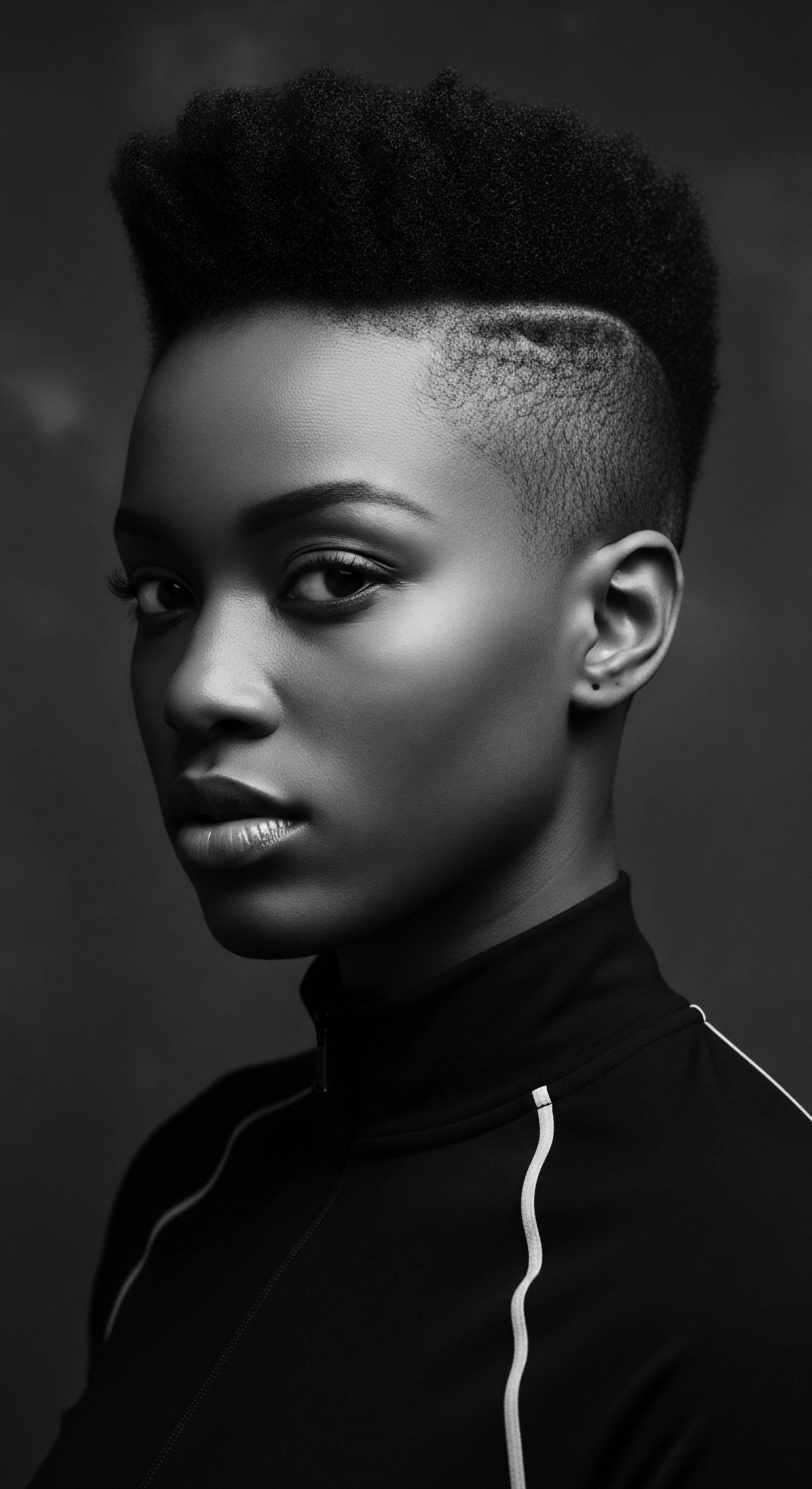
The Unseen Architectures of Identity
Beyond its visible manifestations, Cultural Expression through hair extends into the unseen architectures of identity and memory. Psychological studies suggest that hair, particularly for individuals with textured hair, is deeply intertwined with self-perception and racial identity development. The journey of understanding, accepting, and celebrating one’s natural hair often parallels a deeper exploration of one’s heritage and a stronger connection to ancestral roots. This process of self-discovery, mediated by hair, forms a crucial part of an individual’s psycho-social well-being.
Moreover, the intergenerational transmission of hair care knowledge represents a vital aspect of this unseen architecture. Grandmothers teaching daughters, and daughters teaching their children, are not merely passing on techniques; they are transmitting cultural values, resilience, and stories. This embodied knowledge, often unwritten, forms a profound educational system that preserves the very Essence of a people’s heritage.
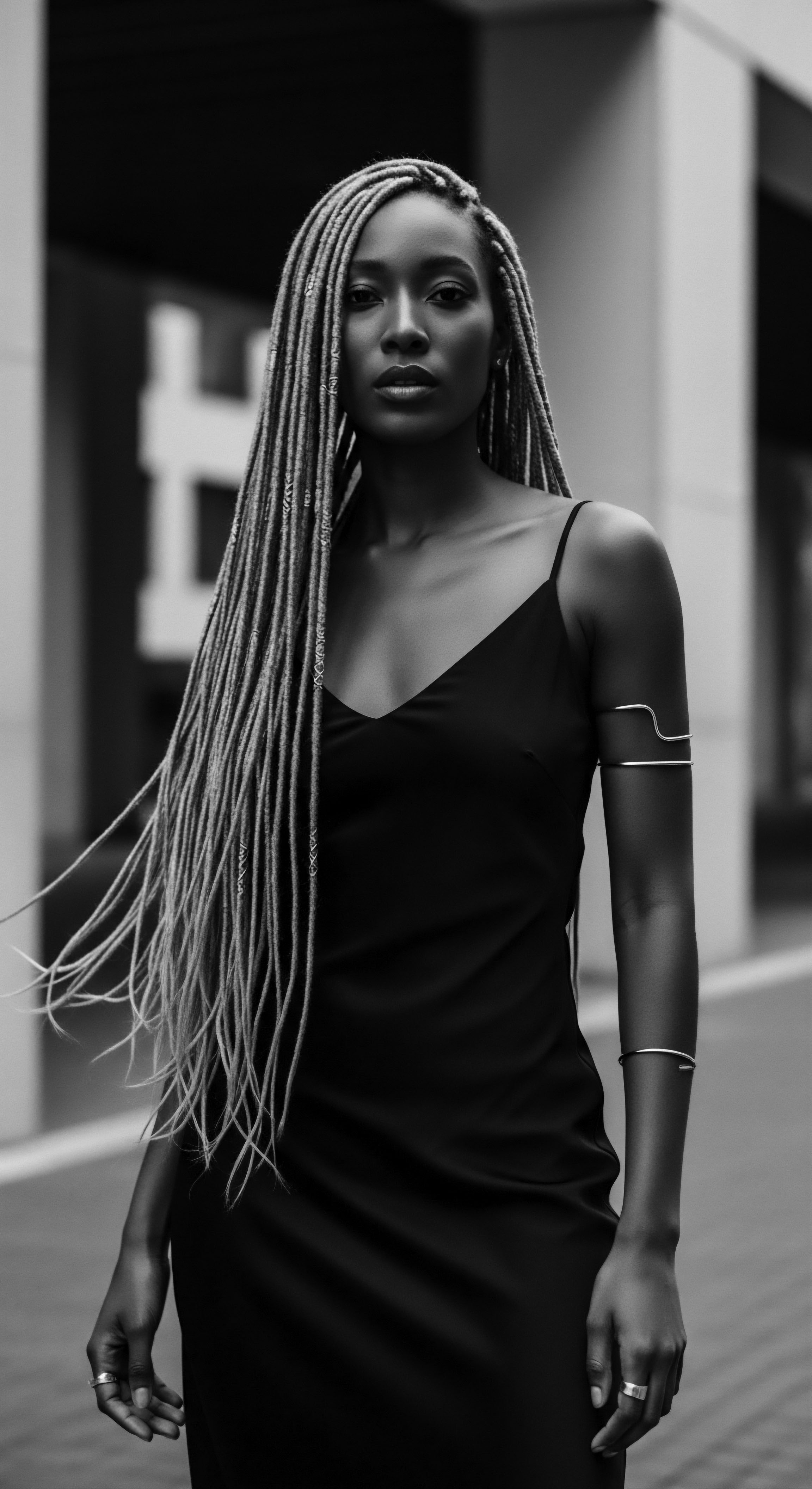
Beyond the Visible ❉ The Epigenetic Legacy of Hair
An advanced scholarly view of Cultural Expression in textured hair also considers its epigenetic implications. While direct genetic changes due to cultural practices are not implied, the concept explores how historical experiences, particularly those of trauma and resilience, may subtly influence the intergenerational understanding and valuing of textured hair. The persistent struggle for acceptance, the historical discrimination faced by those with natural hair, and the eventual triumph of the natural hair movement, leave an indelible mark on collective consciousness and cultural practices.
This perspective suggests that the very act of caring for and celebrating textured hair today is not just a contemporary trend but a continuation of an ancestral imperative to preserve identity and dignity. It is a profound acknowledgment that hair carries not just biological information, but also the living memory of a people, a testament to their enduring spirit and capacity for self-Delineation. The scientific and cultural converge here, revealing how the physical strand becomes a profound symbol of an unbroken heritage.
- Hair as Covert Communication ❉ During slavery, intricate braiding patterns were used to convey escape routes or hide valuable seeds for survival and future cultivation, demonstrating hair as a tool for resistance.
- Reclamation of Ancestral Aesthetics ❉ The Natural Hair Movement across various eras represents a powerful rejection of Eurocentric beauty standards and a conscious return to and celebration of indigenous African hair aesthetics.
- Intergenerational Knowledge Transfer ❉ Hair care rituals serve as vital sites for the transmission of cultural knowledge, historical narratives, and communal bonding across generations within diasporic communities.
- Hair as a Spiritual Conduit ❉ In many traditional African belief systems, hair is considered a sacred link to the divine and ancestral spirits, embodying spiritual power and guidance.

Reflection on the Heritage of Cultural Expression
The journey through the Definition and profound Meaning of Cultural Expression, as embodied by textured hair, leaves us with a deeper reverence for its enduring legacy. It is a testament to the boundless ingenuity and spirit of communities who, despite historical adversities, found in their hair a resilient canvas for identity, a silent yet potent language of heritage. This exploration reaffirms that the Soul of a Strand is not merely a poetic notion; it is a living archive, a continuous narrative etched into each coil and curl, echoing the wisdom of ages.
To truly appreciate the Cultural Expression of textured hair is to recognize it as a vibrant, breathing connection to ancestral wisdom, a thread that binds the past to the present and stretches into the future. It is a celebration of diversity, a beacon of resilience, and a powerful reminder that beauty, in its most authentic form, is a reflection of one’s unique heritage. This ongoing dialogue between hair and history invites us to listen closely, to learn, and to honor the sacred stories that each strand holds.
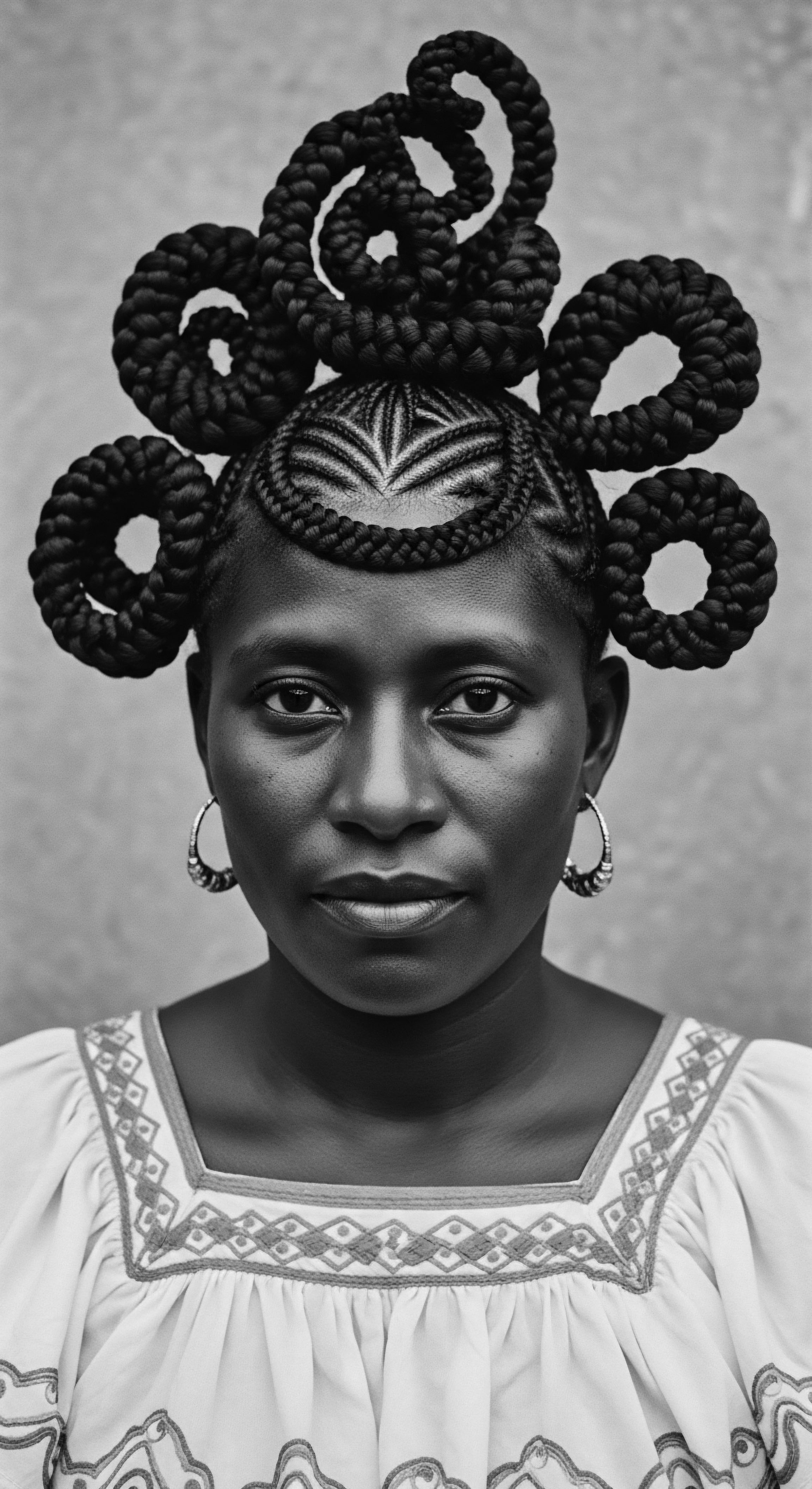
References
- Carney, J. A. & Rosomoff, R. N. (2009). In the Shadow of Slavery ❉ Africa’s Botanical Legacy in the Atlantic World. University of California Press.
- Byrd, A. D. & Tharps, L. D. (2014). Hair Story ❉ Untangling the Roots of Black Hair in America. St. Martin’s Griffin.
- Mercer, K. (1994). Welcome to the Jungle ❉ New Positions in Black Cultural Studies. Routledge.
- Akbar, N. (1998). Light from Ancient Africa. New Mind Productions.
- Banks, I. (2000). Hair Matters ❉ Beauty, Power, and the Politics of Hair in African American Women. New York University Press.
- Walker, A. (2001). The Science of Black Hair ❉ A Comprehensive Guide to Textured Hair Care. A. Walker Publishing.
- Blay, Z. (2017). Yellow ❉ Race in America Beyond Black and White. Penguin Press.
- Okoro, N. (2018). African Hair ❉ Its Cultural and Historical Significance. Africa World Press.
- Rastogi, S. K. & Sharma, V. (2010). The Anthropology of Hair. Concept Publishing Company.
